Dodsworth (1936)
By Toronto Film Society on May 7, 2020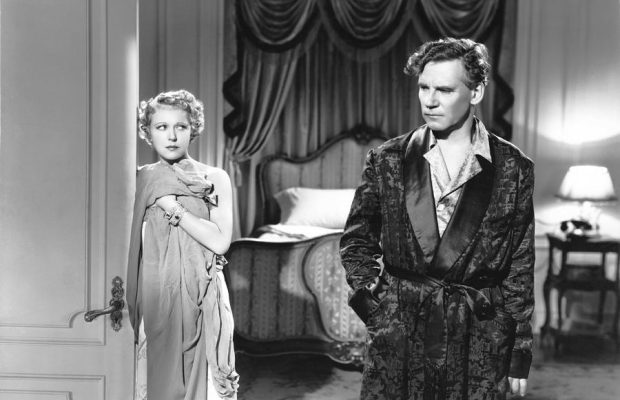
Toronto Film Society presented Dodsworth (1936) on Sunday, December 4, 2022 as part of the Season 75 Sunday Afternoon Film Buffs Series, Programme 3.
Toronto Film Society presented Dodsworth (1936) on Sunday, April 8, 1984 in a double bill with Roberta as part of the Season 36 Sunday Afternoon Film Buffs Series “A”, Programme 9.
Producer: Samuel Goldwyn. Director: William Wyler. Screenplay: Sidney Howard, based on the novel by Sinclair Lewis. Music: Alfred Newman. Photographer: Rudolph Mate. Editor: Daniel Mandell. Assistant Director: Eddie Bernoudy. Art Director: Richard Day. Costumes: Omar Kiam. Released by United Artists September 23, 1936.
Cast: Walter Huston (Sam Dodsworth), Ruth Chatterton (Fran Dodsworth), Paul Lukas (Arnold Iselin), Mary Astor (Edith Cortwright), David Niven (Capt. Clyde Lockert), Gregory Gaye (Baron Kurt von Obessdorf), Maria Ouspenskaya (Baroness von Obersdorf), Odette Myrtil (Mme. Renee de Penable), Spring Byington (Matey Pearson), Harlan Briggs (Tubby Pearson), Kathryn Marlow (Emily McKee), John Howard Payne (later John Payne) (Harry), Charles Halton (Hazzard), Beatrice Maud (Dodsworth Maid).
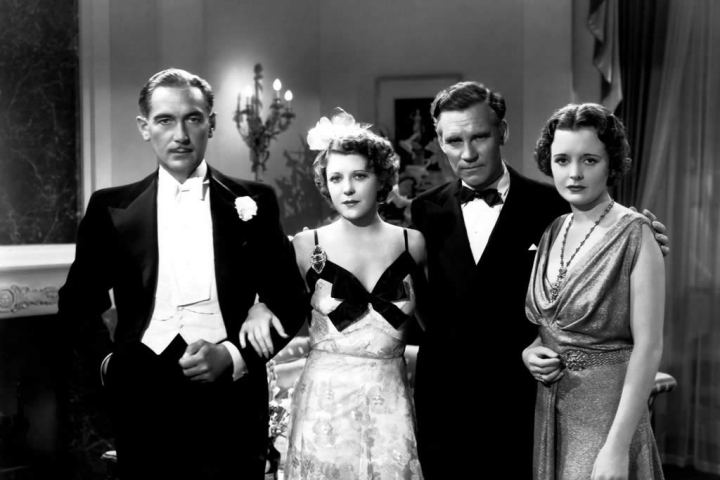
Even in 1936 Dodsworth was an oddity, for films in which the main characters are middle-aged have always been the exception. However, it was based on a successful Broadway play, which in turn had its origins in a 1929 novel by Sinclair Lewis, the first American writer to receive the Nobel Prize. In his novels, Lewis offered a sharp and easily assimilated image of the American upper-middle class. Concentrating on single representative individuals, such as Sam Dodsworth, Lewis was able to define dramatically the best and the worst in American life. Other Lewis novels filmed by Hollywood have included Arrowsmith (1931), and Cynara (1932), both starring Ronald Colman, and Elmer Gantry (1960) with Burt Lancaster giving an Academy-Award winning performance in the title role.
In a nutshell, Dodsworth is the story of American naivete meeting European sophistication. Sam Dodsworth is a decent, successful small-town businessman from Ohio who, at his wife’s urging, embarks on a Continental tour. She had always hated the dull and insular atmosphere of their small town and, on the brink of becoming a grandmother, is trying to forget her age and find a more sophisticated, cosmopolitan form of life. While Sam embarks on the tour to see something of the world, his Fran goes to win admiration and soon drifts into a series of affairs with several charming Europeans. When she announces that she wants a divorce, Sam reluctantly consents and begins traveling around Europe by himself. En route, he meets Edith Cortwright (Mary Astor), a shipboard acquaintance, and falls in love with this warm, worldly woman.
Walter Huston recreated his stage role of Sam Dodsworth. The part of Fran had been played on Broadway by Fay Bainter, while Huston’s wife, Ninetta Sunderland, had portrayed Edith.
Dodsworth was brought to the screen by Hollywood’s foremost independent producer, Samuel Goldwyn. Although from most accounts Goldwyn was a ruthless, overbearing, short-tempered, generally unpleasant individual, with little formal education, he nonetheless had a discerning eye for good motion-picture material, and engaged the best talent available to film it. Sidney Howard, one of America’s leading dramatists, was only one of such top writers as Robert Sherwood, Ben Hecht, Charles MacArthur, Edna Ferber and Dorothy Parker who worked on Goldwyn pictures. Goldwyn was a perfectionist, but one with taste as well. As one of his stars, Joel McCrea, wrote, “Goldwyn wanted everything associated with him to be the very best.” And Teresa Wright, who starred in four Goldwyn films, recalls, “He set out to make each film the best he had ever made.”
Directing Dodsworth was William Wyler, working on his second film for Goldwyn after a number of years of tuning out mostly routine films at Universal. Goldwyn hired him to direct These Three, released earlier in 1936, and the Wyler-Goldwyn team went on to bring forth some of Hollywood’s finest films. Wyler, too, was a perfectionist, and Goldwyn gave him the freedom to film scenes time and again until he got them just right, bringing that little something extra to the screen.
On set, Wyler argued frequently with Ruth Chatterton, whom he felt was playing her character in an overly unsympathetic manner. Miss Chatterton had been a Broadway star and a Hollywood leading lady during the 1920’s and early 1930’s; by 1936, though, her motion-picture career was nearing its finish.
Mary Astor, who worked well with Wyler, described him as “an inspirational director, tough and exacting but sensitive.” In films since 1922, she spent most of her career as a featured player in major films or as a leading lady in programmers. Occasionally, though, a picture came along such as Dodsworth, where Mary Astor could put everything she had learned to maximum use in a quality film.
As Sam Dodsworth, Walter Huston was excellent: impulsive, bewildered, firm and childlike. Throughout much of his acting career after 1929 he alternated between stage and screen. In 1948 he again showed everyone how it was done by appearing in his own son John’s The Treasure of the Sierra Madre and won an Academy Award. Walter Huston’s birthdate was April 6, 1884. Today’s screening pays due homage to this Torontonian’s (!!) 100th birthday.
One of the ironies in the 1984 motion-picture scene is that, in an era when most people have far more education than was the case in 1936, a picture based on a literary classic such as Dodsworth would stand almost no chance of being made. Today’s T.V.-conditioned audiences, it seems, have no interest in pictures that lack a shock or thrill every five minutes. However, as long as well-crafted films such as Dodsworth are shown, those of us who prefer something better will have our vehicle back to a better time.
Notes by John Thompson
Spot the Canadian by Leslie Smith
The IMDb mini-biography by Jon C. Hopwood says it best: “The great William Wyler directed Walter Huston in what is perhaps his finest performance on film, the eponymous Dodsworth in Wyler’s 1936 adaptation of Sinclair Lewis’s novel.
Huston received the first of his four Academy Award nominations for the role, which he had originated on Broadway in 1934. Huston’s reputation as a great actor is rooted in this performance, one of the greatest by an English-speaking actor preserved on film.”
It’s high praise indeed but in no way unwarranted. Eugene O’Neill, the only American playwright to win the Nobel Prize in Literature and the creator of Huston’s first break-out Broadway role in the mid-1920s, said Walter Huston’s portrayal of Ephraim Cabot in Desire Under the Elms was the greatest performance by any actor in any of his works. Following Huston’s early talkie move to the West Coast, film industry colleagues seem to agree with this estimation, nominating him for Oscars four times in 12 years.
Significantly showcasing the actor’s repertoire-style versatility, two of these nominations were for Best Actor – Dodsworth (1936) and All That Money Can Buy (1941) – and two were for Best Supporting Actor – Yankee Doodle Dandy (1942) and The Treasure of the Sierra Madre (1948), marking the first time any actor had been nominated in both categories. He finally won for the latter film, one of three movies he appeared in which were directed by his son, the renowned John Huston.
In Yankee Doodle Dandy, as well as John Ford and Gregg Toland’s Oscar-winning documentary short December 7th (1943), Huston appears as Uncle Sam, the personification of the United States. His portrayal of Abraham Lincoln in D.W. Griffith’s 1930 film of the same name rounded off a cinematic trifecta in Yankee patriotism. Not bad acting for a kid born April 5, 1883 in Toronto, Ontario, Canada.
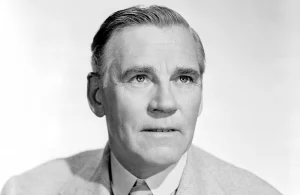
As a young man, Walter Huston studied both engineering and theatre. At the start of his career, he toured in the latter craft after making his stage debut in 1902. In 1904, he married journalist Rhea Gore, who gave birth to Huston’s only child, John, in Nevada in 1906. To provide more support for his new family, Huston quit acting and went to work as an engineer at a Missouri water works. Here, he proved less successful. After constructing a flawed reservoir that came close to flooding a nearby town, Huston returned to the stage in 1909, never to really leave it again, despite his long foray in Hollywood.
He and Rhea divorced the same year. Huston went on to marry actor Mina Rose, billed as Bayonne Whipple, in 1915; they divorced in 1931. Later, Ninetta Sunderland proved that the third wife was the charm; she was with him until his 1950 death in Beverly Hills from an aortic aneurysm.
Other good things came to him in threes. His son John had three children, all of them in the business: actor/writer Tony Huston, actor/director Danny Huston, and actor/producer/director Anjelica Huston. Walter, John and Angelica all won Academy Awards, making them the first family to win Oscars across three generations (the Coppola family later duplicated this feat).
After his death, Huston received a star on the Hollywood Walk of Fame although shamefully, to this late date, he has never been inducted into the Canadian Walk of Fame. Be that as it may, an historic plaque was affixed to his former home in Cabbagetown, as well as to the Winchester Public School he once attended. One more sidelight: Huston – no professional singer – could also claim the best-selling debut recording of “September Song,” by Kurt Weill and Maxwell Anderson, taken from his 1938 Broadway show Knickerbocker Holiday.
Walter Huston remains to this day one of Hollywood’s most celebrated actors. His knack for expressing strong emotion through low-key performances (a facility he claimed the movies helped teach him) gave him a more natural acting style than most of his contemporaries, making his work still feel fresh and compelling today.
Op cit: Richard Day, Art Director
You may also like...
-
News

Frances Blau
Toronto Film Society | February 27, 2024On Monday, February 26th, 2024, Toronto Film Society lost longtime friend, supporter, and board member Frances Blau. Known for her sense of humour, her love of film, her generosity,...
-
Special Events

Monday Evening Film Noir Double Bill at the Paradise Theatre
Toronto Film Society | July 8, 2024The Toronto Film Society presents a film-noir double feature at one low price! The Window (1949) in a double bill with Black Angel (1946) at the Paradise Theatre on Monday, August...
Programming

Virtual Saturday Night at the Movies
Toronto Film Society | July 20, 2024Toronto Film Society is back in the theatre! However, we’re still pleased to continue to bring you films straight to your home! Beginning Season 73 until now we have...
4-
 Toronto Film Society | July 8, 2024
Toronto Film Society | July 8, 2024
Monday Evening Film Noir Double Bill at the Paradise Theatre
-
 Toronto Film Society | November 6, 2022
Toronto Film Society | November 6, 2022
-
 Toronto Film Society | August 1, 2023
Toronto Film Society | August 1, 2023
Donate to Toronto Film Society – We’re now a Registered Charity!
-
Copyright © 2017 Toronto Film Society.

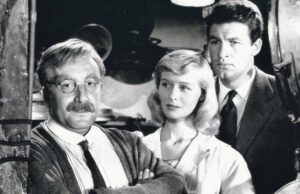
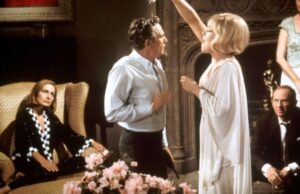
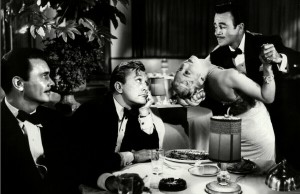
Leave a Reply